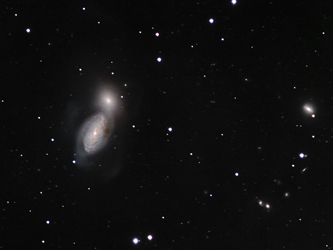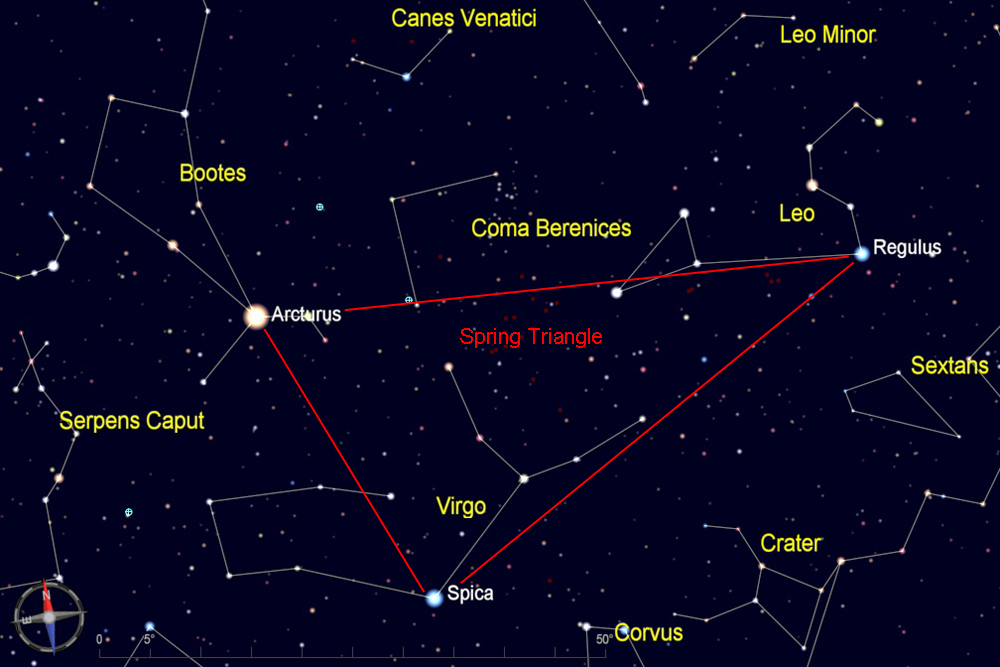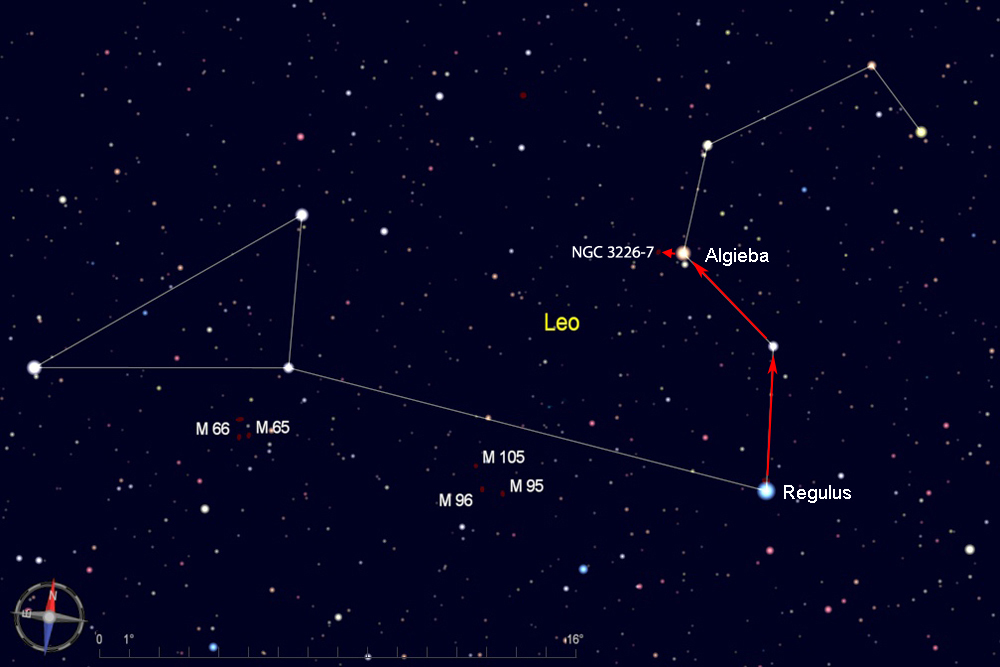At about magnitude 11, this interacting pair of galaxies can be spotted with a medium-sized telescope, and they are easy to locate because of their proximity to the bright star Algieba. They are about 77 million light years away. NGC 4227, the southernmost of the two, is slightly larger and brighter. Less than 1/4 degree to the west is NGC 3222, a much smaller galaxy of magnitude 12.8 that is estimated to be about 270 million light years away.
|
 |
| Evening visibility: |
February-June |
| Best viewed with: |
telescope |
| |
Printable chart (pdf) |
View larger image |
Directions:
Start by finding the Spring Triangle, which consists of three widely-separated first magnitude stars--Arcturus, Spica, and Regulus. The Spring Triangle is high in the southeast sky in early spring, and in the southwest sky by mid-Summer. (To get oriented, you can use the handle of the Big Dipper and "follow the arc to Arcturus").
For this star hop, begin at Regulus in the constellation Leo, the lion. |
 |
| The constellation Leo looks like a lion in profile, with its head to the west and its tail to the east. After finding Regulus, look north for a star that begins the "sickle" shape of Leo's neck and head, then look northeast to reach bright Algieba, a nice double star. From Algeiba, move about 3/4 degrees to the east to reach NGC 4226 and 4227. Once you observe them, look 1/4 degree to the west (toward Algieba) and try to spot the much smaller NGC 3222. |
 |
| Star charts created with Cartes du Ciel |
| |
| |


